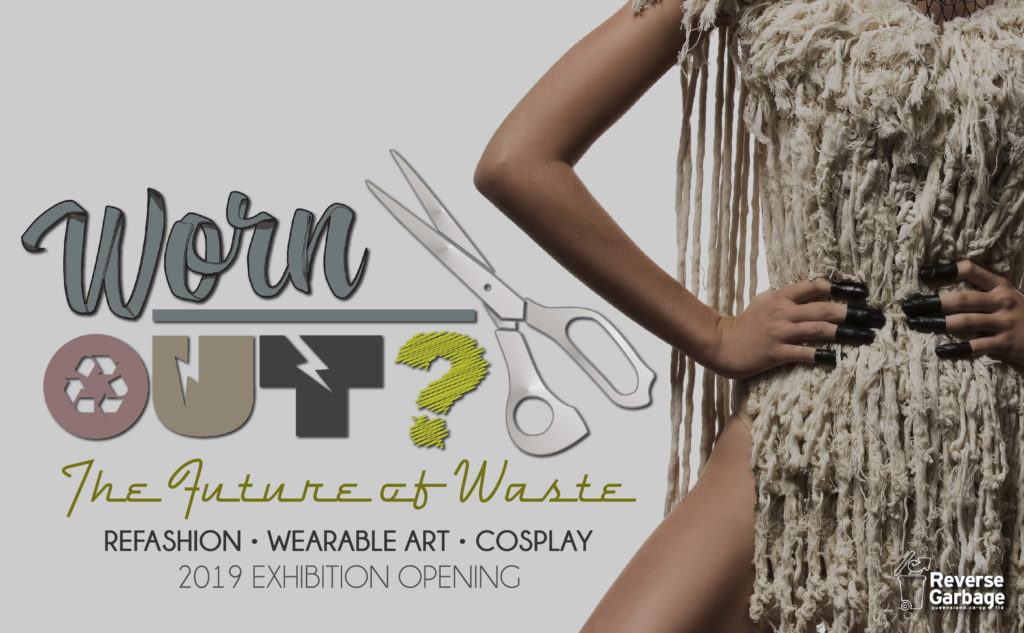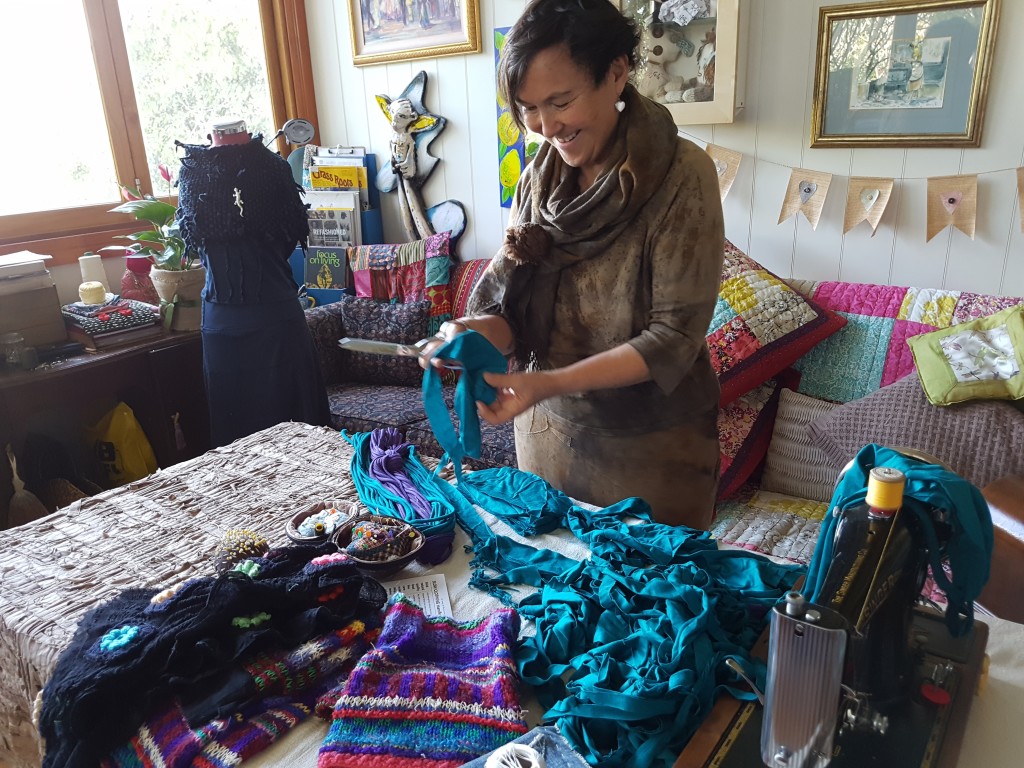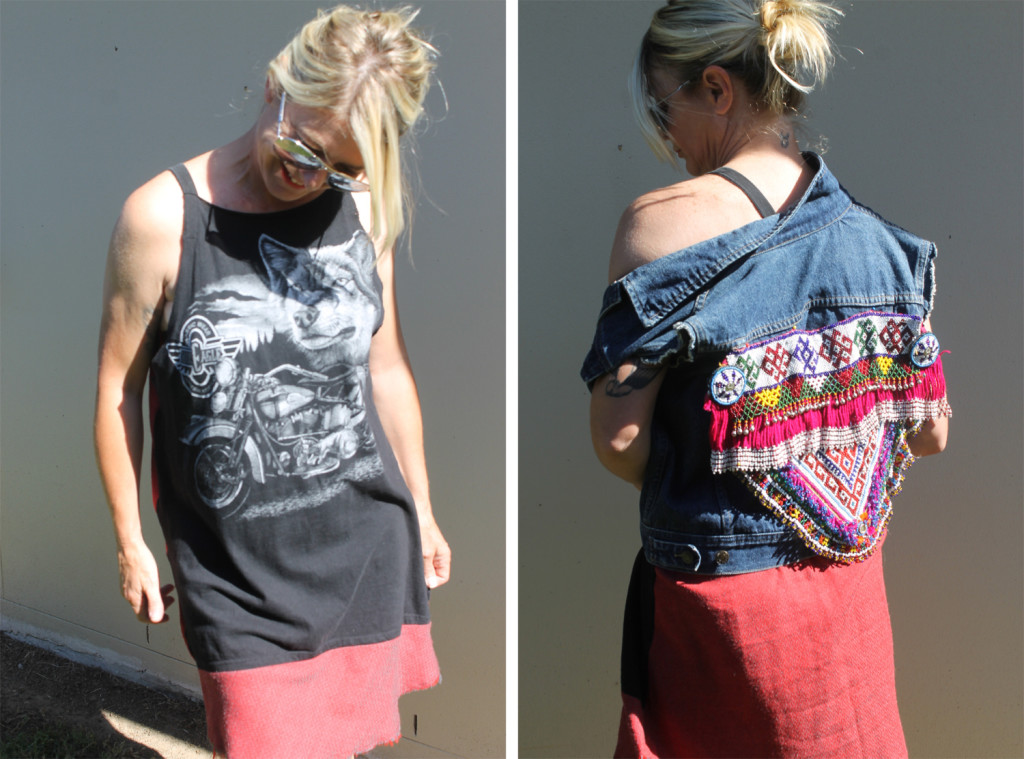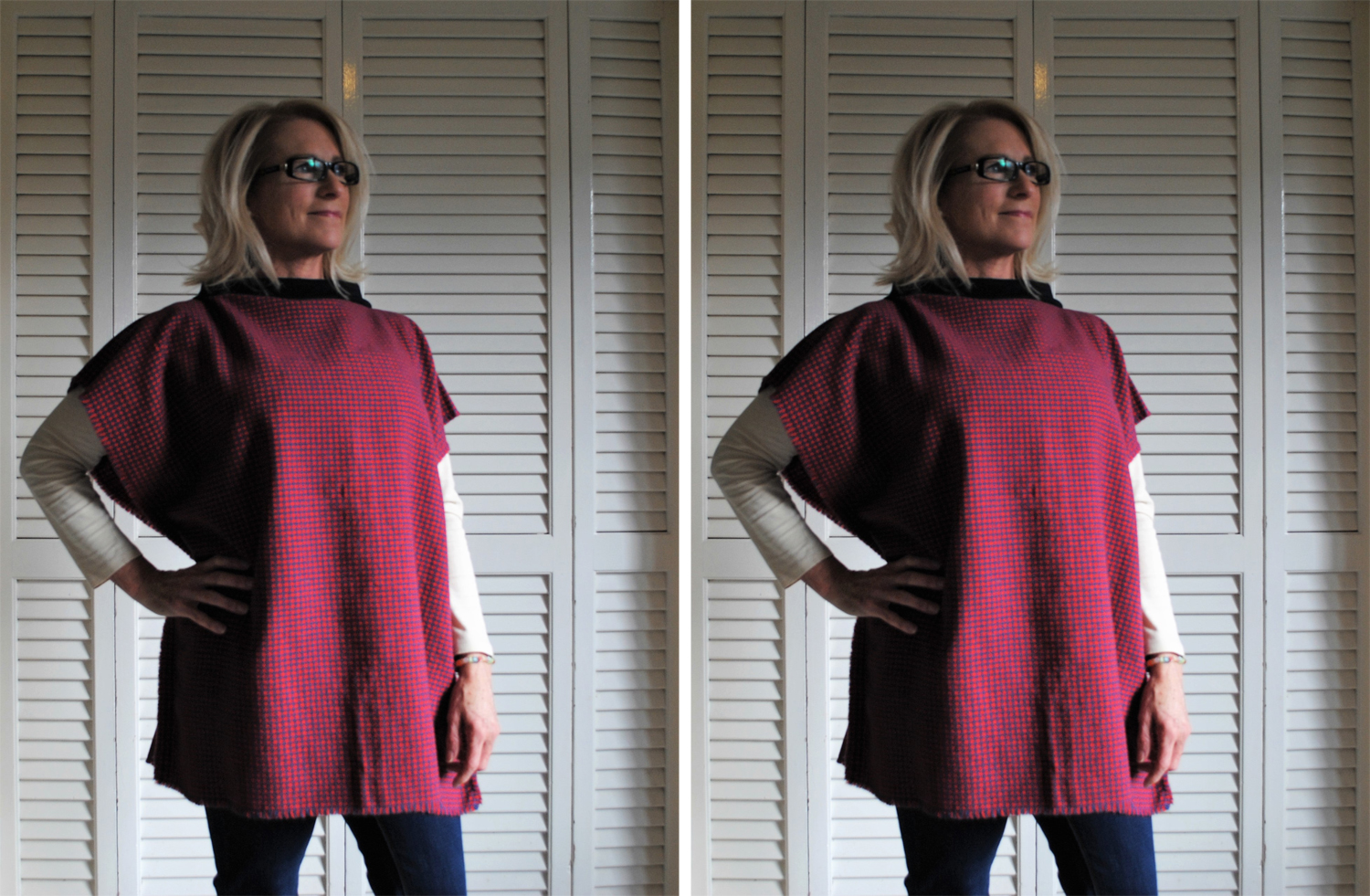Everything old is new again
I rescue natural fibres. I already have many, yet I bought a $2 wool blanket with holes at an RSPCA op shop recently. It has no label, just remnants of blanket-stitched edges. I know it is wool by the feel of the fibres which glow in the sunlight after I wash it. I admire the texture and beauty of the old woven threads. There is life there. I will upcycle this ‘dog blanket’ into a garment with a story to tell about how it came to be.
All my clothes are handmade or secondhand and they feel good on many levels. My clothes are imprinted with individual spirit, my kansei. I refashion existing garments to suit my body shape, or completely transform discarded resources into something of my own making. I buy almost nothing new, except underwear and shoes.
Even though I have bought secondhand on and off forever, I did not talk about it. There was a stigma of poverty, of less than, in secondhand although vintage was OK if slightly quirky.
That was before I stepped up, before I did leadership study and learned about self-actualisation, before I upcycled my career as a rural advocate and communications manager to found a start-up called Textile Beat in 2013. Now I champion slow clothing, raise awareness of textile waste and the potential for upcycling old natural fibres into new.
Rethinking clothing culture
By Jane Milburn Textile Beat founder and sustainability consultant
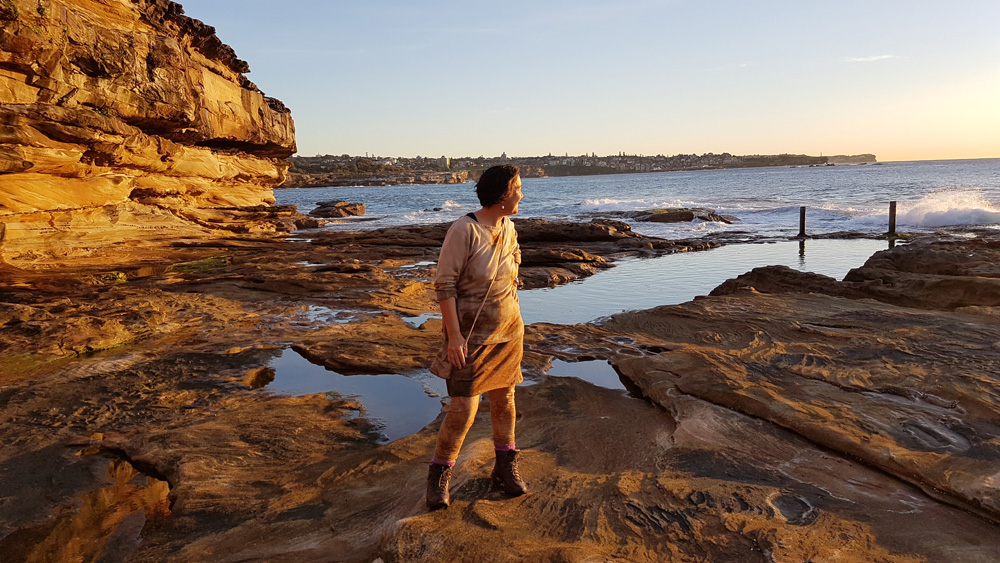
Textile Beat founder Jane Milburn clothed in wool garments given a second life using eco-dye. Photo by Ele Cook
My campaign on clothing waste has been a lifetime in the making. It began as a child learning hand-making skills and continued as a student upcycling big old dresses and thrifted finds.
I made many of my clothes for decades then rediscovered op shops in 2011 after a Fashion for Flood fundraiser. I began visiting op shops and particularly seeking out natural-fibre garments – wool jumpers with a hole, linen shirts with a missing button. The waste of resources troubled me because I grew up on a farm and have an agricultural science degree. What was happening to our clothing culture I wondered?
Upcycling makes unique – Bron Berkin
Bron Berkin’s wardrobe is 100 percent restyled, secondhand clothing, upcycled, and vintage pieces. Her love of vintage fashion, stunning fabrics and workmanship of a bygone era – and her attraction to the unique – led Bron into upcycling and recycling preloved clothes as her work evolved from loving and selling original vintage to hand-making individual pieces using vintage fabrics and material that was retro quirky and different.
She now runs a small business designing, sewing and upcycling at Yeppoon in central Queensland. ‘It has been amazing to see people embracing what I was doing and enjoying the ‘one-off’ pieces!”
Sewing brings wellbeing – Sally Harris
Clothing has become so available and affordable in the past decade that most people no longer sew. Yet there are intangible rewards from making your own wearables, including a sense of achievement from reusing natural resources.
Canberra-based Sally Harris credits The Slow Clothing Project with giving her an incentive to sew again. “With such emphasis on new clothes these days, it is lovely to take part in the Slow Clothing Project and enlighten people to the good old ways.” Continue Reading →
Upcycling 365 days, forever
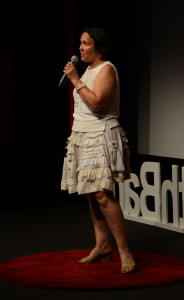 Brisbane-based upcycler Jane Milburn spent every day of 2014 restyling cast-off clothing and engaging others in the process of refashioning old into ‘new’ as part of the eco-social change project Sew it Again.
Brisbane-based upcycler Jane Milburn spent every day of 2014 restyling cast-off clothing and engaging others in the process of refashioning old into ‘new’ as part of the eco-social change project Sew it Again.
Using simple home-sewing skills to snip-and-tuck unworn textiles (mainly linen, cotton, wool and silk from op shops and friends) Jane then posted the upcycles at sewitagain.com to demonstrate ways to re-new rather than buy-new.
“Every day, we eat and we dress. We are now more conscious of our food and it is time to become conscious of our clothing and its footprint on the world. A global rethink about the way we dress is beginning, as people question where clothing is made and what from, is it ethical and sustainable, and does it exploit people or planet?” Jane said.
As an agricultural scientist turned creative, Jane is raising awareness about the ecological impacts of our cheap/disposable fashion culture that consumes finite resources and generates textile waste at an alarming rate. Continue Reading →
